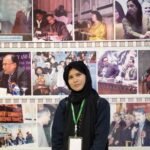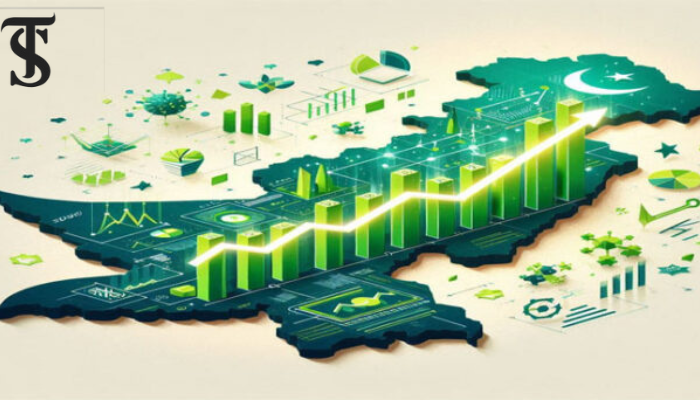Pakistan Needs Structural Reforms Rather Than IMF Bailouts

- Heavy Reliance on IMF: Pakistan has turned to the IMF 26 times since 1958, becoming one of its largest borrowers, yet outcomes have been insufficient due to recurring fiscal deficits, high inflation, and incomplete policy implementation.
- Persistent Economic Challenges: Political instability, military expenditures, and nationalization policies have hindered sustainable growth, while recent crises, like the COVID-19 pandemic and 2022 floods, exacerbated financial strains and infrastructure damage.
- Need for Structural Reforms: Sustainable economic growth requires investments in agriculture, manufacturing, and skilled labor, along with energy diversification and climate resilience to reduce reliance on loans and foster resilience.
Pakistan frequently turns to the International Monetary Fund (IMF) for financial assistance whenever its economy nears crisis. Over the years, it has received 26 IMF financial packages under various Stand By Agreements and the Extended Fund Facilities. However, despite these efforts, the outcomes have generally been insufficient, deepening economic pressures.
Since Pakistan first sought IMF assistance in 1958, it has become a recurring debtor. It currently ranks as the fifth-largest IMF borrower, with around $7 billion in IMF obligations. Its external debt has surged past $131 billion, with much owed to international bodies and bilateral lenders. This growing debt raises concerns over Pakistan’s economic independence as the country struggles to implement the fiscal reforms demanded by the IMF and faces persistent fiscal deficits.
According to a report by Mian Ahmad Naeem Salik, a research fellow at the Institute of Strategic Studies Islamabad, the federal budget for 2024-2025 has been set at PKR 18 trillion to meet the IMF’s requirements and move toward stability. This budget targets tax revenue of PKR 13 trillion—about 40% higher than the previous fiscal year—with a 64% rise in non-tax revenue. Inflation is projected to hit 12%, and the fiscal deficit stands at PKR 7.283 trillion, with a significant portion of funds allocated for debt servicing and a 17% increase in defense spending. However, this budget lacks substantial measures to bolster Pakistan’s agricultural and manufacturing sectors, two critical areas for sustainable economic growth.
Pakistan’s economic challenges trace back to its early years post-independence. Initially relying on an agrarian economy, the country depended on agricultural exports while its industrial base remained underdeveloped, increasing demand for imports. This economic imbalance, alongside the strain from a large migration of refugees, put immense pressure on Pakistan’s resources. The industrialization policies and the Green Revolution during Ayub Khan’s regime initially boosted economic growth, but high government spending led to fiscal deficits and dependency on external loans, eventually leading to Pakistan’s first IMF bailout in 1958.
The 1965 Indo-Pak War and the 1971 Bangladesh Liberation War significantly impacted Pakistan’s economy, primarily due to rising military expenditures and the economic loss of East Pakistan, which was a major export hub. In the 1970s, Zulfiqar Ali Bhutto’s nationalization policies and extensive public spending on state-owned enterprises created further fiscal strain, with fiscal deficits reaching 8% of GDP. Additionally, the 1973 global oil crisis escalated petroleum import costs, severely affecting Pakistan’s economy.
In the 1980s, the Soviet-Afghan war further burdened Pakistan’s economy. General Zia-ul-Haq’s policies attempted to balance Islamization with economic liberalization, but these conflicting policies had limited success. The Afghan war drew Pakistan into dependency on foreign aid from the United States and Gulf states, while the arrival of Afghan refugees and the rise of extremist groups such as the Taliban created long-term economic challenges, hampering foreign investment.
A 2001 report by the Economist Intelligence Unit cited Pakistan’s “negative image” internationally, due to perceptions of Islamic fundamentalism, sectarian violence, and regional tensions with India. These issues, alongside political instability and high levels of military involvement in governance, discouraged foreign investment, causing many entrepreneurs to leave Pakistan.
During Benazir Bhutto’s government, Pakistan faced near-bankruptcy due to high-interest loans from previous regimes. Political instability, coupled with IMF and World Bank conditionalities on public spending cuts and tax hikes, added to the fiscal deficit. Nawaz Sharif’s tenure later brought GDP growth through privatization and infrastructure projects, but issues such as economic disparity, political conflicts, and persistent corruption hindered sustainable development.
Under President Pervez Musharraf, notable projects like Gwadar Port and highway development were undertaken. However, rural areas remained neglected, and the post-9/11 war on terror involvement further deterred foreign investment, adding to economic instability. Asif Ali Zardari’s government attempted structural reforms, including social programs like the Benazir Income Support Program and the initiation of the China-Pakistan Economic Corridor (CPEC). Despite these efforts, economic challenges persisted due to corruption, terrorism, and an unstable energy supply.
To build a resilient economy, Pakistan needs consistent, structural reforms focused on sectors with the highest growth potential. The agricultural sector, in particular, requires significant investment in advanced technology and research to boost productivity.
More recently, Imran Khan’s administration pursued tax reforms and poverty alleviation initiatives, like the Ehsaas Program. However, the COVID-19 pandemic and pre-existing fiscal strains limited progress, and political turmoil following Khan’s removal further destabilized the economy. In 2022, catastrophic floods during Shehbaz Sharif’s tenure severely damaged infrastructure and deepened economic distress. Today, Pakistan’s reliance on IMF loans continues due to high inflation, currency devaluation, escalating debt, and a persistent trade imbalance.
IMF loans typically come with stringent conditions, including reduced government spending, subsidy cuts, tax reforms, and higher tariffs. As pointed out in Meekal Aziz’s paper “The IMF and Pakistan,” blaming Pakistan’s economic troubles solely on the IMF is misguided. The IMF’s role is advisory, while the responsibility for policy implementation lies with Pakistan’s government. However, IMF policies have often been inadequately implemented, and successive governments have failed to deliver sustainable growth, leaving Pakistan in a cycle of short-lived recovery and economic decline.
While various governments have taken steps toward economic stability, sustained reform has remained elusive due to political instability, corruption, and international pressures. To build a resilient economy, Pakistan needs consistent, structural reforms focused on sectors with the highest growth potential. The agricultural sector, in particular, requires significant investment in advanced technology and research to boost productivity. Collaboration with countries like China could also enhance production in agriculture, textiles, and small-scale industries.
Pakistan’s textile industry, one of the largest contributors to exports, could benefit from diversification and added-value products, enhancing its competitiveness globally. Similarly, small-scale industries—such as leather goods, sports equipment, surgical instruments, and handicrafts—could significantly boost exports with improved production standards. Tourism, an area with vast potential given Pakistan’s natural beauty, could further diversify revenue sources if security conditions improve.
Investing in skilled labor is another essential step, with exchange programs in developed countries serving as a means to transfer knowledge and improve workforce capabilities. The energy sector, too, requires a shift towards diversified and cost-effective sources to ensure stable and affordable energy. Most importantly, Pakistan must prioritize climate change adaptation, as it remains highly vulnerable to climate-related disasters that have consistently harmed the economy.
Ultimately, overcoming these challenges requires unified efforts and a long-term, multi-stakeholder approach to economic governance, prioritizing national interests over political divisions. Implementing comprehensive reforms and ensuring effective governance can help Pakistan build a resilient economy and improve the well-being of its people.

Kainat Batool
The author is a graduate with a Bachelor of Business Administration, majoring in Finance, from BUITEMS, Quetta. She is also an alumna of the Women2Women America International Leadership Program.






“Absolutely loved this article! You did a great job making (Pakistan Needs Structural Reforms Rather Than IMF Bailouts) approachable and engaging. I felt like I was learning something new with every paragraph. Thank you for putting so much thought into this piece; it’s clear you genuinely care about helping readers understand. Keep up the amazing work!”
👍
“Absolutely loved this article! You did a great job. I felt like I was learning something new with every paragraph. Thank you for putting so much thought into this piece; it’s clear you genuinely care about helping readers understand. Keep up the amazing work!”
👍.
Great in-depth analysis. It is interesting to see how the politics of Pakistan has always affected the economy since the country’s creation.